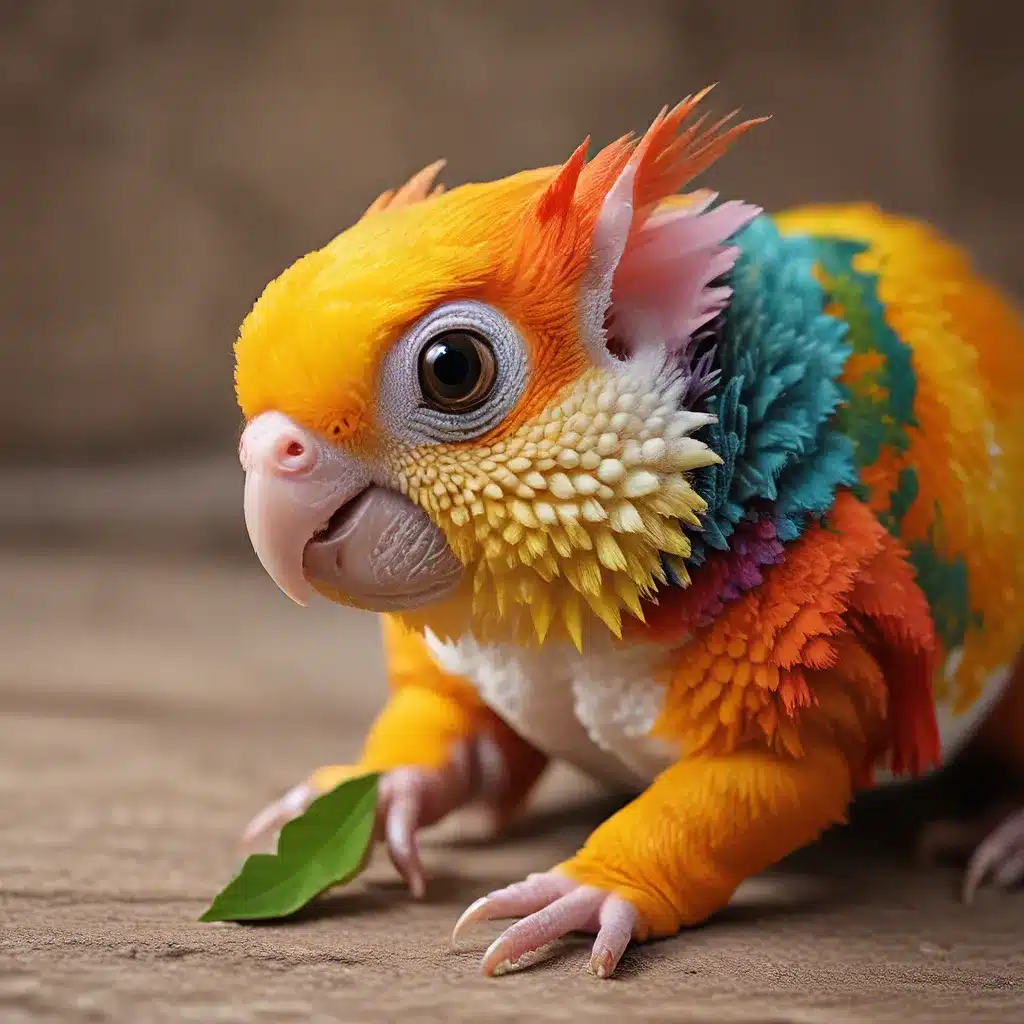
Have you ever found yourself captivated by the mesmerizing gaze of a reptile or the vibrant plumage of an exotic bird? If so, you might be one of the many adventurous souls drawn to the world of exotic pet ownership. But before you embark on this journey, it’s crucial to understand that these extraordinary creatures have dietary needs that are far from ordinary.
Decoding the Diverse Diets of Exotic Pets
Imagine a world where your furry friend’s diet consists of live insects, freshly sliced fruits, and a delicate balance of vitamins and minerals. Welcome to the realm of exotic pet care, where the culinary preferences of our scaly, feathered, and scaled companions can be as unique as their personalities.
Take, for instance, the case of our scaled friends, the reptiles. These captivating creatures have evolved to thrive on a diet that may seem downright alien to us mere mortals. From the voracious appetite of a Burmese python, which can swallow an entire rabbit, to the delicate palate of a bearded dragon, content with a medley of leafy greens and the occasional cricket, each reptilian species has its own distinct dietary requirements. Understanding these nuances is the key to providing the optimal care for our scaly companions.
But it doesn’t stop there. Our feathered friends, the exotic birds, are a diverse bunch with equally diverse culinary preferences. While some may thrive on a diet of high-quality seed mixes, others may require a carefully curated blend of fresh fruits, vegetables, and specialized pellets. And let’s not forget the small mammals, like the charming chinchilla, whose delicate digestive systems demand a fiber-rich diet of hay, dried leaves, and the occasional treat.
Navigating the Labyrinth of Exotic Pet Nutrition
As we delve deeper into the world of exotic pet ownership, we quickly realize that a one-size-fits-all approach to nutrition simply won’t do. Each species, and even individual pets, have their own unique dietary needs that must be meticulously met to ensure their health and well-being.
Imagine the plight of a bearded dragon, its vibrant scales dimming due to a lack of essential vitamins and minerals. Or the heartbreak of a cockatiel, its feathers dull and brittle, crying out for a more balanced diet. These are the challenges that exotic pet owners must be prepared to face, armed with a deep understanding of their pet’s nutritional requirements.
To navigate this labyrinth of exotic pet nutrition, let’s explore a few key considerations:
Macronutrient Ratios
Just like us humans, exotic pets require a delicate balance of macronutrients – protein, carbohydrates, and fats. But the optimal ratios can vary greatly between species. For instance, reptiles often require a higher protein intake, while birds may thrive on a diet with more carbohydrates and healthy fats.
Micronutrient Needs
Beyond the macronutrients, exotic pets also have unique micronutrient requirements, such as vitamins, minerals, and trace elements. Deficiencies in these crucial nutrients can lead to a host of health issues, from metabolic bone disease in reptiles to feather plucking in birds.
Hydration and Moisture Content
Many exotic pets, particularly reptiles and amphibians, have specific hydration needs that go beyond just providing a water bowl. The right humidity levels and moisture content in their food can be the difference between a thriving pet and one that struggles to survive.
Behavioral Adaptations
Interestingly, some exotic pets have evolved unique feeding behaviors that must be taken into account when designing their diets. For example, some species may require live prey, while others may prefer to forage for their food.
Customizing Diets for Optimal Health
With so many factors to consider, the task of providing the perfect diet for an exotic pet can seem daunting. But fear not, for with a little research and the guidance of experienced veterinarians, you can create a tailored meal plan that will have your furry (or scaly) friend thriving.
One of the keys to success is to embrace the diversity of exotic pet diets. Just as you wouldn’t feed a goldfish the same food as a dog, you can’t expect a bearded dragon and a parrot to share the same menu. It’s all about understanding the unique nutritional needs of each species and individual pet.
For instance, let’s consider the case of a curious cockatiel named Ziggy. Ziggy’s owner, Sarah, has done her homework and knows that cockatiels require a diverse diet of high-quality seed mixes, fresh fruits and vegetables, and specialized pellets. But Ziggy, being the unique individual that he is, has developed a particular fondness for sliced apples and cooked sweet potatoes.
With this knowledge, Sarah can now customize Ziggy’s diet to include his favorite treats in moderation, while still ensuring he receives all the essential nutrients he needs to thrive. It’s a delicate balance, but one that pays off in the form of a happy, healthy, and well-fed exotic pet.
Embracing the Adventure of Exotic Pet Nutrition
As we’ve discovered, the world of exotic pet nutrition is a vast and fascinating landscape, filled with unique challenges and immensely rewarding experiences. From the captivating gaze of a bearded dragon to the vibrant plumage of a cockatiel, each species brings its own culinary preferences and dietary requirements to the table.
But with a little dedication, a dash of creativity, and the guidance of expert veterinarians, we can embark on a journey of discovery, customizing diets that not only nourish our exotic companions but also deepen the bond we share with them. So, let’s embrace the adventure, one delicious morsel at a time, and celebrate the incredible diversity of the exotic pet world.

